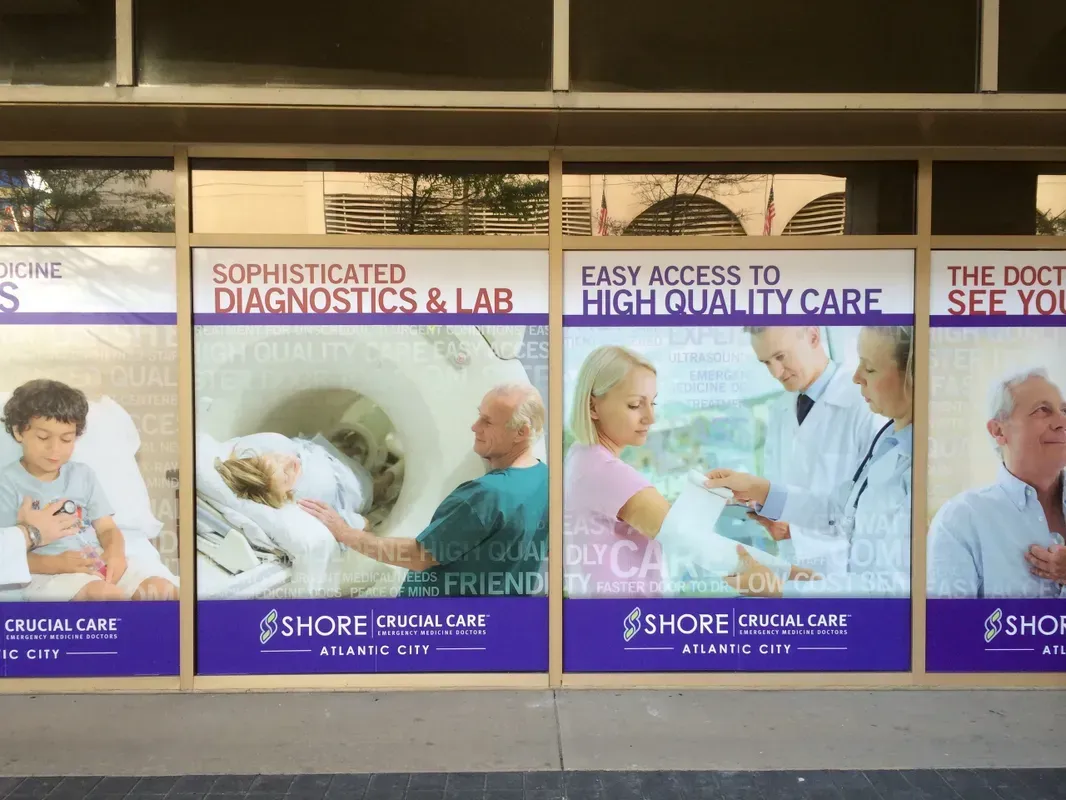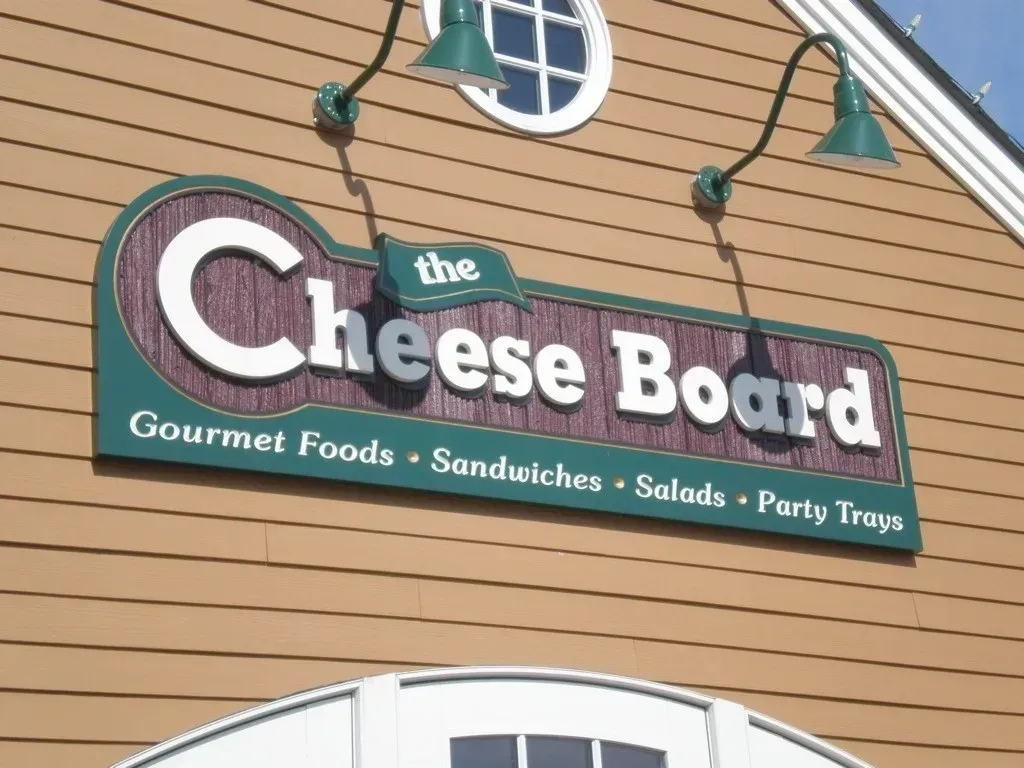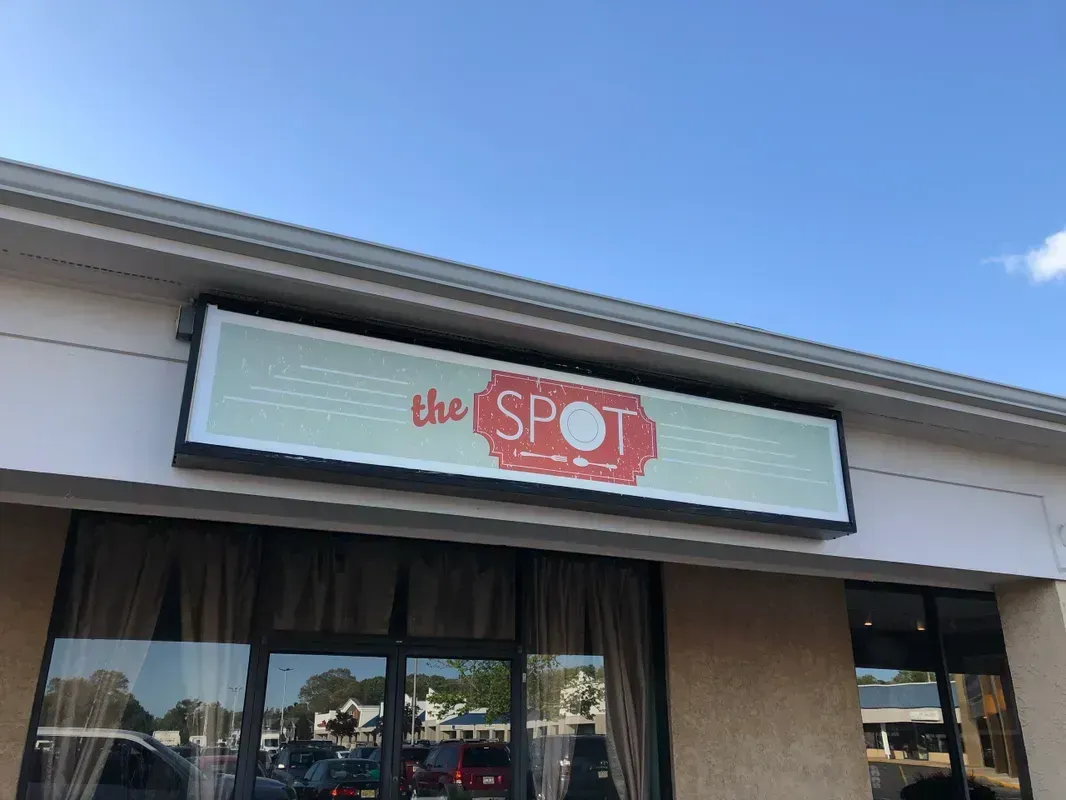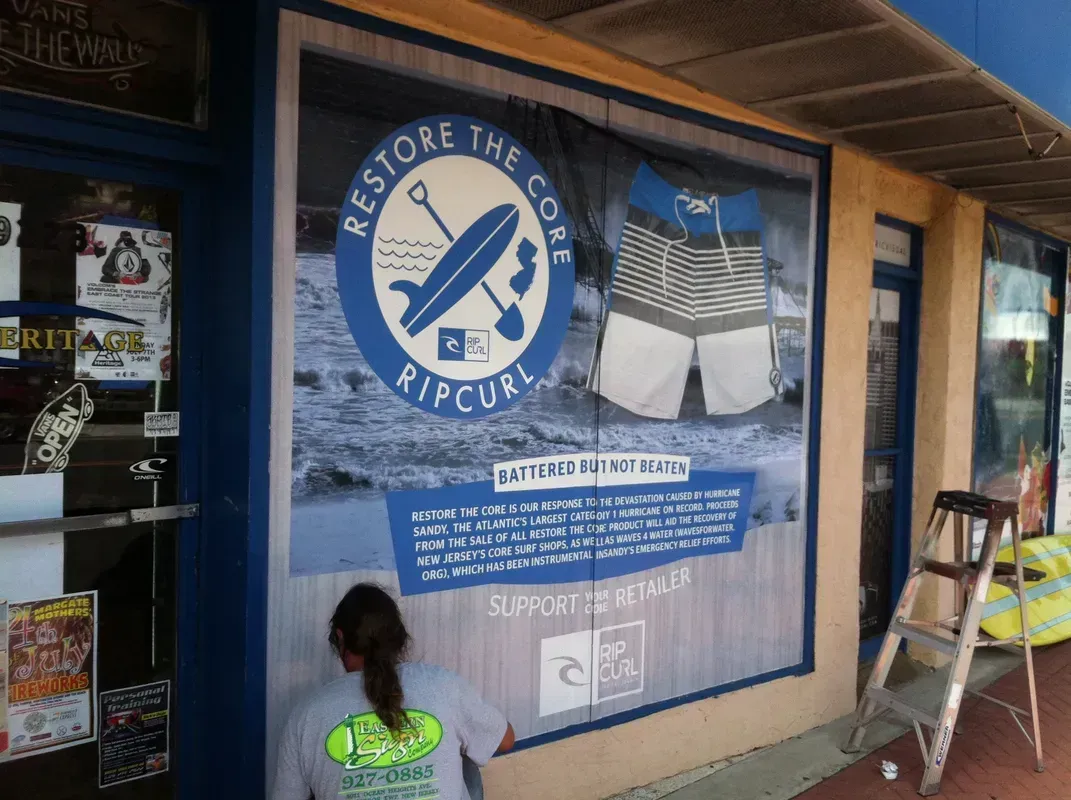Front Window Decals: A Blend of Creativity and Advertising.
Goodly Service • August 16, 2023
In a world where digital noise often overwhelms us, businesses are re-embracing the tangible, the local, and the visually impactful. Enter the world of front window decals—a strategy as old as shopfronts themselves but rejuvenated with modern flair and technology. These decals don't just inform or decorate; they entice, narrate, and most importantly, they engage. In the bustling streets of any city or the quiet corners of small towns, a beautifully crafted decal can halt a passerby in their tracks. It’s an immediate visual connection, a silent but powerful conversation between a business and potential clients. From evoking nostalgia to showcasing the avant-garde, these decals are much more than mere stickers on a window. They represent a business's heartbeat, ethos, and offer a glimpse into the world inside. As we dive deeper into the realm of front window decals, we'll explore how they've become a masterclass in combining creativity with strategic advertising, becoming pivotal tools for businesses worldwide.
A Brief History
The concept of decorating windows for both aesthetic and informational purposes traces its roots back centuries. Here's a brief journey through time to understand the evolution of front window decals:
- Ancient Times: In ancient civilizations such as Rome and Egypt, shopkeepers used painted signs or etchings on walls and windows to advertise their wares. Although rudimentary, these were early incarnations of what would become modern decals.
- Late 19th Century: The development of lithography in the late 1800s made it easier to produce decorative elements en masse. While not directly applied to windows, these printed materials were precursors to adhesive decals.
- Early 20th Century: As automobiles gained popularity, so did the need for signage and advertisement related to them. This period saw the advent of oilcloth and leather decals which later evolved with the introduction of vinyl materials.
- Post-WWII Era: The technological advancements post-World War II brought about new printing techniques and materials. This era marked the birth of the modern vinyl decal, as businesses recognized the potential of colorful, durable stickers that could withstand environmental wear.
Late 20th & Early 21st Century: Digital printing technology revolutionized the decal industry. High-resolution graphics, UV resistant inks, and customizable designs became available, enabling businesses to create more detailed and vibrant window decals than ever before.
Today, front window decals have become a synthesis of history, art, and technology. They're not just tools for branding and advertising but also a reflection of societal trends, technological progress, and evolving design sensibilities.
The Creative Appeal
At the heart of a successful front window decal lies creativity. Decals have become an artistic canvas for businesses to convey their brand story.
- Versatility: From minimalist designs to intricate graphics, decals cater to a broad spectrum of artistic tastes.
- Personalization: Every business has a unique story. Decals can be tailored to encapsulate a brand's essence.
- Dynamic Designs: With the option to change them regularly, businesses can keep their front windows fresh and relevant, aligning with ongoing campaigns or seasons.
Advertising with Impact
Front window decals aren’t just visually appealing—they're effective marketing tools.
- High Visibility: Placed strategically on front windows, decals catch the eyes of passersby, making for prime advertising real estate.
- Cost-Effective: Compared to ongoing expenses of digital ads or billboards, a high-quality decal can provide visibility for an extended period at a fraction of the cost.
- Local Engagement: Decals can connect businesses with local communities by promoting offers, events, or community partnerships.
The Fusion of Art and Marketing
One of the standout qualities of front window decals is how they effortlessly marry creativity and advertising.
- Telling a Story: A well-designed decal tells a story. Whether it's a coffee shop showcasing the journey of a coffee bean or a bookstore depicting a fantasy realm, these stories draw customers in.
- Branding Consistency: Incorporating brand colors, logos, and fonts ensures that the decal remains consistent with other marketing materials, offering a cohesive brand experience.
- Interactive Opportunities: With augmented reality (AR) advancements, some decals now serve as AR markers. Customers can scan them with their phones to unveil interactive content, bridging the gap between offline and online marketing.
Case in Point: Real-world Successes
Many businesses have harnessed the dual power of creativity and advertising with their decals.
- Local Cafés: Many coffee shops use decals to showcase their organic blends or to depict cozy, inviting scenes, appealing to coffee lovers.
- Bookstores: By transforming their windows into popular book covers or fictional worlds, bookstores captivate potential readers.
- Fitness Centers: Gyms and yoga studios might showcase powerful silhouettes or calming Zen visuals, resonating with fitness enthusiasts.
The Future of Front Window Decals
While the past has laid a solid foundation for the art of window decals, the future holds even greater promise as technology and creativity continue to intertwine. Here's a glimpse into the burgeoning horizons of front window decals:
- Smart Decals: As the Internet of Things (IoT) becomes ubiquitous, we could soon see decals that interact with smartphones or other smart devices. Imagine a decal that changes its message based on real-time data, such as weather conditions or sales analytics.
- Eco-friendly Materials: As sustainability becomes an ever-important global priority, the demand for eco-friendly, biodegradable decals will rise. These materials will offer the same vibrancy and durability without harming our planet.
- 3D and Holographic Decals: With advancements in display technology, future decals might not be limited to 2D. 3D and holographic decals can offer an immersive experience, enticing customers in ways we've only seen in science fiction.
- Augmented Reality Integration: Beyond the current basic AR markers, front window decals could serve as portals to full-fledged augmented reality experiences. A customer pointing their phone at the decal might be transported into a virtual store, get a 360-degree product preview, or access exclusive digital content.
- Personalized Experiences: Using facial recognition or AI algorithms, decals might offer tailored messages to passersby. For instance, someone frequently shopping for vegan products might see a decal highlighting a store's vegan range.
It's clear that while front window decals have traveled a long path from their rudimentary beginnings, their journey is far from over. Their potential is only limited by imagination. As technology evolves and businesses adapt, these decals will not only continue to be a cornerstone of localized marketing but will redefine the ways in which businesses and customers interact, ensuring they remain relevant, engaging, and ever-evolving.
Conclusion
The increasing blend of creativity and advertising in front window decals suggests a trend towards more personalized and impactful marketing strategies. As technology continues to advance, businesses can expect even more innovative ways to engage with their audiences through this medium.
Front window decals are no longer just about displaying a business name or hours of operation. They have transformed into visual stories, captivating narratives that draw customers in, making them not just viewers, but participants in a brand's journey. If you're in Egg Harbor Township, NJ, and seeking expertise
in this area, the Eastern Sign Company
stands out as the premier service provider. With a reputation for unparalleled craftsmanship and customer service, you can reach them at (609) 927-0885
for all your decal needs. In the intersection of art and advertising, front window decals shine brightly, showcasing the boundless possibilities of creative marketing.
Stay ahead with Eastern Sign Company! Explore 2024's banner design trends. Call (609) 927-0885 for captivating designs that stand out.









